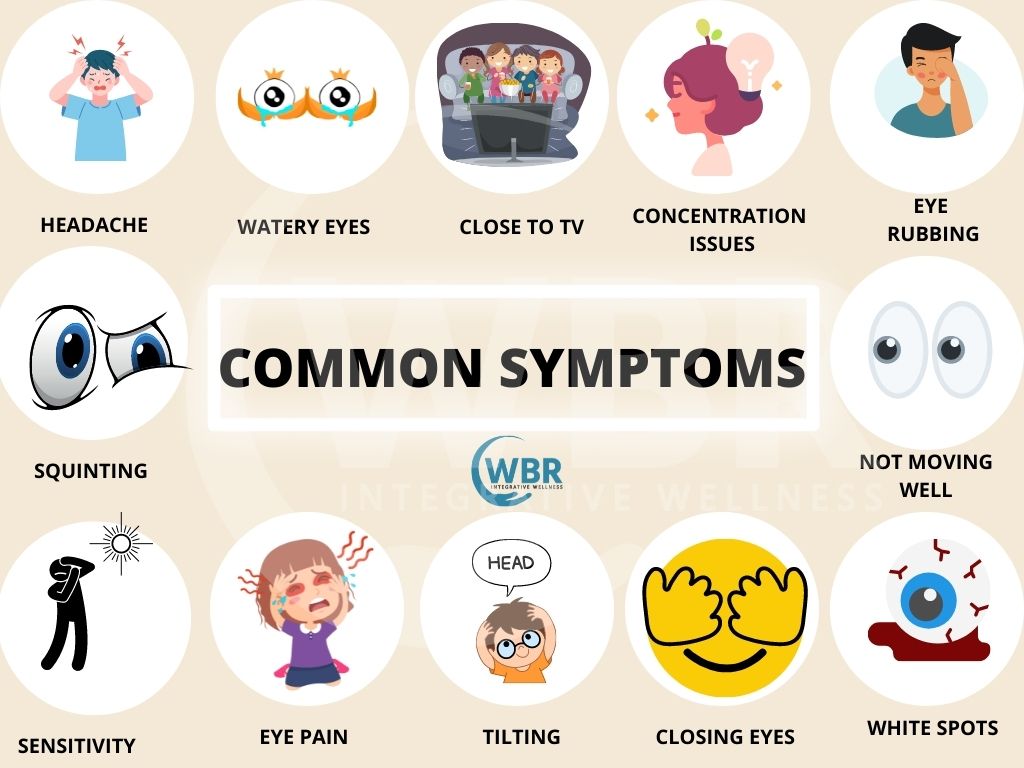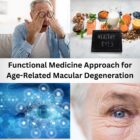Eye Health Tips for Children
Eye health plays a crucial role in a child’s development. Having regular checkups is very important at this stage. Since they are still developing, early treatment can make a long-lasting difference. Unfortunately, around 20% of kids are getting diagnosed with vision problems. In the current internet generation, it is never too early to have sight issues. Early detection can help to manage situations without affecting development.
Causes for Eye Problems
The constant exposure to light leads to a high chance of photo-oxidation. Antioxidants and nutrient deficiency are major cause of eye disease. Some of the most common causes include
- Neurological conditions like cortical vision impairment affect the parts of the brain that control sight.
- High inflammation because of toxins (LPS) released by pathogenic bacteria.
- Genetic conditions like albinism and retinitis pigmentosa.
- Diseases like pediatric glaucoma cancers like retinoblastoma or cataracts.
- Some illnesses that happen to premature babies.
- Kids that have particular problems during birth.
- Some kinds of infections like rubella.
- Structural problems of the eyes limiting vision such as microphthalmia and anophthalmia.
- An injury to the eye, especially to the pathway that connects the brain and eye, or to the brain’s visual center.
- Malnutrition or low absorption.
- More screen time, exposure to blue light.

Common Symptoms
The majority of eye conditions do not show any symptoms. Some severe eye conditions show some signs and symptoms occasionally. Hence the only sure way is to take the child for an eye test. Here are some signs
- One or both pupils appear unusual or white, majorly seen in photographs.
- Constant watering of the eye.
- The eye can appear to drift inwards or outwards.
- Concentration difficulty
- Behavior problems
- Headache
- Moving close to the TV
- Rubbing eyes frequently
- Their eyes do not seem to be moving well
- Extreme sensitivity to light or glare
Common eye problems should not be neglected. Check with your family doctor when you see symptoms.

Integrative Approach to Maintain Good Eye Health
Our lifestyle and nutrition play a crucial role in our overall well-being. Which small changes, we can live a healthy and happy life. Here we explain everything you need to know to maintain eye health.
Diet and Nutrition for Eye Health
It is recommended to follow anti-inflammatory and microbiome diet and include following in your diet: broccoli, carrots, cabbage, cauliflower, green vegetables, squash, sunflower seeds, watercress, turnips, and legumes. Eliminate white sugar and white refined flour from your diet. Antioxidant addition is a powerful way of improving your kid’s eye health. To improve your kid’s vision and overall eye health, vitamins, minerals, and antioxidants should be included in their diet. Here is a list of nutrients and vitamins.
Lutein and Zeaxanthin
According to studies, they help to reduce risks related to chronic eye diseases. They are found in green leafy vegetables. Moreover, they are found in colorful fruits and vegetables such as broccoli, corn, peas, persimmons, and tangerines.
Vitamin C
Intake of Vitamin C reduces the risk of developing vision problems. When it is mixed with other essential nutrients, it can also slow down other vision problems. Oranges, strawberries, papaya, green peppers, and tomatoes are excellent sources of Vitamin C.
Vitamin E
Free radicals are unstable molecules trying to break down healthy eye tissue. Vitamin E helps to protect eye tissue from free radicals. Good sources of Vitamin E include nuts, sweet potatoes, wheat germ, vegetable oils including safflower and corn oil, nuts, etc.
Essential Fatty Acids
Some fatty acids, like Omega 3, are crucial for good visual development and retinal function. Studies prove that getting enough Omega 3 fatty acids is essential for optimal visual effect. They help to enhance tear production, reduce inflammation and support the eye’s outer layer.
Zinc
Zinc is vital in transporting vitamin E from the liver to the retina to produce melanin. Melanin is the protective pigment of the eyes. Impaired vision, like poor night vision, has always been linked to zinc deficiency. Natural sources of zinc are nuts and seeds, whole grains, etc.
Cysteine and Alpha Lipoic Acid
Alpha lipoic acid and cysteine have been shown to prevent the oxidative damage in the eye by acting as antioxidants, protecting tissues from free radical damage. Cysteine can be obtained from consuming cysteine-rich foods, such as protein-rich foods, or supplementing with N-acetyl-cysteine. Alpha lipoic acid also plays a role in regenerating other antioxidants, including glutathione, vitamin C, and vitamin E.

Can Diet Increase the Risk of Vision Problems?
An unhealthy diet consisting of processed foods does not have a nutritional value. Hence, kids will not get optimal eye and vision health nutrition. Moreover, research states that a high-fat diet or processed food increases the chances of developing vision problems. Here is a detailed list of some of the potentially dangerous diets.
Diet Soda
Individuals who take diet soda are at a higher risk of proliferative diabetic retinopathy.
Dehydration
Water is needed to maintain several aspects of health, and vision is no exception. Not having enough water can lead to irritated, dry, or itchy eyes.
High Sodium
Research shows a link between high sodium diet and vision problems. Diet with high sodium damages the retina causing vision problems.
Supplements Guidelines
- Probiotics: Certain good commensal bacteria can help to reduce inflammation, fight infection, helps in absorption and production of vitamins and nutrients, reduce eye dryness, reduce allergies, and overall eye health. The strains lactobacillus acidophilus, lactobacillus paracasei, lactobacillus plantarum, lactobacillus rhamnosus, S. boulardii are good beneficial for eye health.Even Lactobacillus acidophilus can be mix into a saline solution to create the eye-drop solution for most of eye disease.
- Omega-3 fatty acids (including DHA and EPA), carotenoids and zeaxanthin have a protective, anti-inflammatory and antioxidant effect on the eye.
- Zinc, cysteine, and alpha lipoic acid have been shown to prevent the oxidative damage in the eye by acting as antioxidants, protecting tissues from free radical damage.
- Taurine deficiency can leads to retinal photoreceptor degeneration and impaired visual acuity and can be supplemented.
- Vitamin A protects eye from free radicals, B complex needed for intracellular eye metabolism
- N-acetyl-carnosine based eye drops are very powerful to protect eye from oxidative damage and cellular repair.
Note: Kindly consult your medical practitioner before starting any supplement.
Some Exercises Your Kids Can Try
20-20-20 Rule
When your kids are focused on a task, pause every 20 minutes and focus on an object 20 feet away for 20 seconds.
Blink Break
Our eyes blink less when we focus on a TV or computer screen. So, when your kids notice dry eyes or headaches, they must stop and try to blink at a regular rate.
Palms for Relaxation
Cup your Palms and gently place them on your eyes for about 30 seconds. Be careful and do not put any pressure on your eyes.
Figure 8
Imagine number 8 turned on its side approximately 10 feet in front of you. Slowly sketch it with your eyes several times. Now you can go in another direction.
Rolling Eyes
Looking right and left several times without moving your head. Simultaneously it would help if you also looked up and down several times.
Near and Far
This exercise is good for kids, especially those who are wearing glasses. Ask them to remove the glasses and hold their thumb, one near the face and one far. Try focusing on each thumb for 2 seconds. Now try to focus on something across the room or even farther away.
Vision Therapy
Vision therapy is like physical therapy for the eyes. Eye exercises are part of vision therapy. Your optometrist suggests the treatment to improve visual skills, make you more comfortable, and change your brain’s interpretation. In this program, special lens patches and electronic targets are also included.

Dangers of Excessive Screen Time
Parents always caution their kids to sit at least ten feet from the television. But this generation of kids spends hours together staring at computers, laptops, and mobiles. Moreover, these devices are only a few inches away from them. Research proves that these concerns are justified. Kids’ screen time has tripled over the years. Parents are now focusing on this screen obsession’s behavior and psychological dangers. Prolonged screen sessions can result in eye-related issues, including
Dry eyes
Blurred vision
Headache
Sight problems
Protecting child’s Eyes in this society with an ever-increasing dependence on technology is vital. Here are some tips that can help reduce the adverse effects of digital eye strain.
- Eating right during pregnancy and lactation is crucial.
- Provide a nutritious diet to your kid.
- Avoid food with preservatives.
- Encourage your kid for outdoor activities.
- Give your kid toys that encourage visual growth.
- These toys should not have sharp edges.
- Protect from Sun when playing outdoors.
- Child’s Eyes, a regular examination is a must.
- Observe for any signs.
Summary
80% of the learning happens through a vision in children. Unfortunately, the students with learning difficulties have undetected vision problems. Children cannot recognize vision difficulty as they always see it that way. Gradual changes also may go unnoticed. So it is vital to get regular vision screening. Nutrition plays a crucial role in maintaining eye health and overall well-being.
Reference:
https://www.ncbi.nlm.nih.gov/pmc/articles/PMC2873668/
https://www.webmd.com/eye-health/vitamin-e-vision
https://www.tandfonline.com/doi/full/10.1080/23311908.2015.1091062










Vivek
27-Aug-22Nice article